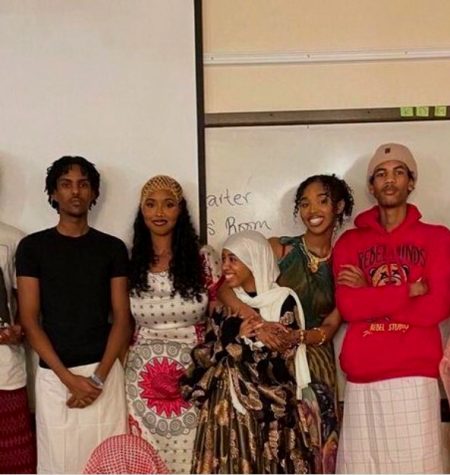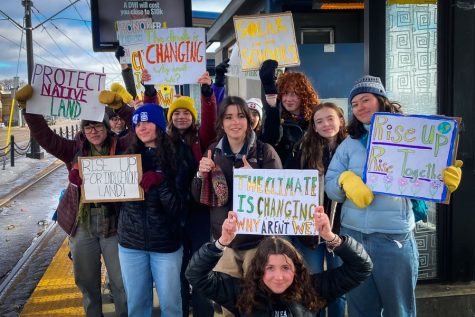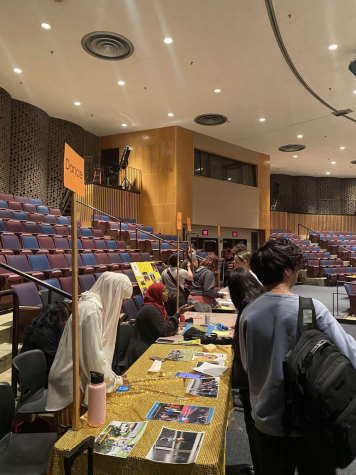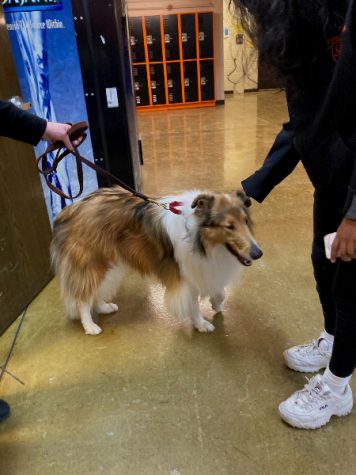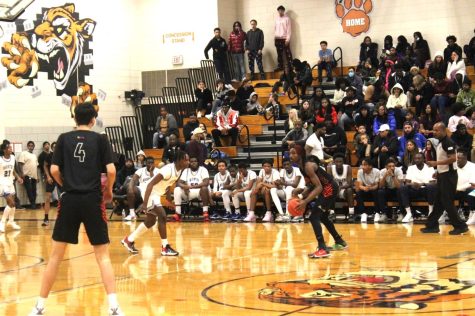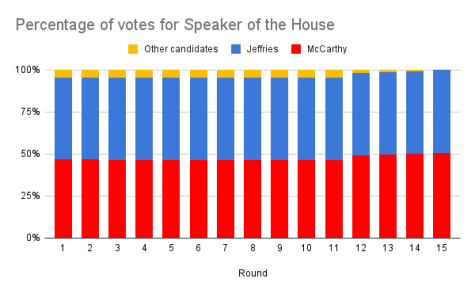Student Council’s revived blood drive is a success
Senior Maria Muller wears the “ABO Joe” blood mascot to promote the blood drive. “Once you see the blood mascot,” said Student Council organizer Madeline Koebrick, “it’s incredible… people want to donate.”
March 28, 2023
After a difficult few years due to the pandemic, South’s student council is back up and running, and has planned a variety of events in the past several months. Their most recent event, the blood drive, is an idea that has been brought back from past years of Student Council and proved to be a success. It took place on February 28, and about 40 students and staff showed up to donate blood.
“The blood drive has been a pretty solid South High tradition for a while,” said Student Council community service chair Madeline Koebrick, “but with the pandemic we had just stopped.” Student Council had planned to organize a blood drive last year with the return to in-person school. However, this was complicated and eventually had to be canceled due to the increase in Covid cases, which caused a brief return to online learning, as well as the MPS strike.
This year, however, Student Council was able to successfully organize the blood drive in partnership with Memorial Blood Centers. South’s administration also worked with Student Council to determine how students would be excused from class while giving blood and what kind of advertising would be allowed. Because many of South’s administrative staff are new to the school, Koebrick said that “they had no idea that we had done blood drives in the past at South, so they were really confused.” She also noted, though, that the administration was completely supportive.
The blood drive took place on February 28, in the “Bloodmobile,” a mobile donation center provided by Memorial and located on the practice field. 36 people signed up beforehand to donate blood, many of which were staff members. Walk-ins were also allowed, and Koebrick said that “people just started showing up, which was awesome.” Some of the success, Koebrick believes, was thanks to the blood costume worn by Maria Muller and Ava Hoch Robinson. “People really noticed that,” Koebrick said. “You can ignore announcements, you can ignore emails and people telling you to donate, but once you see ABO Joe, the blood mascot, it’s incredible… people want to donate.”
Student Council did face a few challenges when organizing the blood drive. Because it coincided with the cyberattack on Minneapolis Public Schools, students’ emails were down, which Koebrick said “was a huge issue” for planning as well as getting the word out to students. Communicating with students about upcoming events can be difficult, as pointed out by senior Milo Bergen, who donated blood. “There could have been more advertising or ways of spreading awareness for it,” he said.
Giving blood is something that can elicit a certain amount of fear, especially among high school students for whom it’s likely their first opportunity to do so. However, this didn’t prevent students from participating. Bergen said that it was a good experience and would recommend it. He said that “it doesn’t prevent you from going about your day afterward… and it’s a good thing to do.” Donating blood can have a big impact, since each donation can provide potentially life-saving treatment to three people. Koebrick explained that “with one unit of blood, they can take plasma, platelets, and red blood cells. And so that’s three things that [someone] can have, from one donation.”
According to Koebrick, the success of the blood drive is a good sign. “This blood drive is really inspiring people to join Student Council, and inspiring the individuals on Student Council to take initiative and plan more fun events,” she said. “We are 100% going to be having blood drives in the future.”

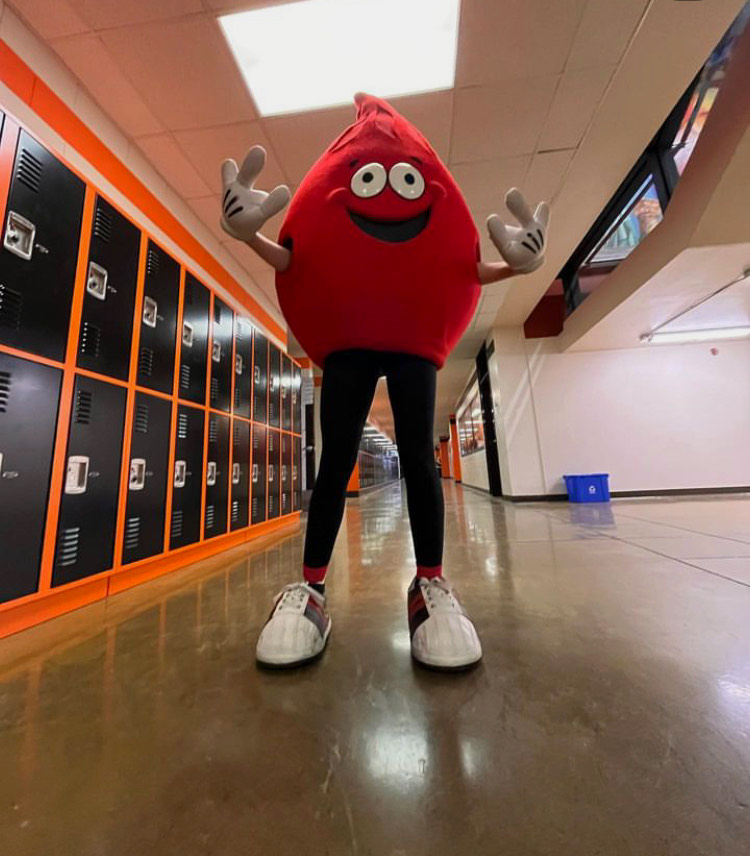
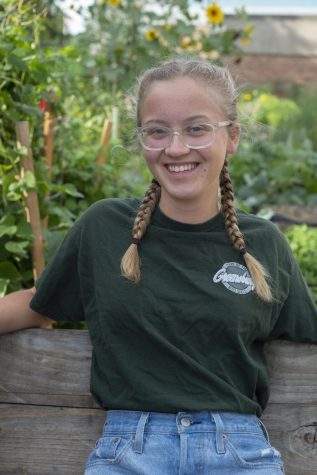
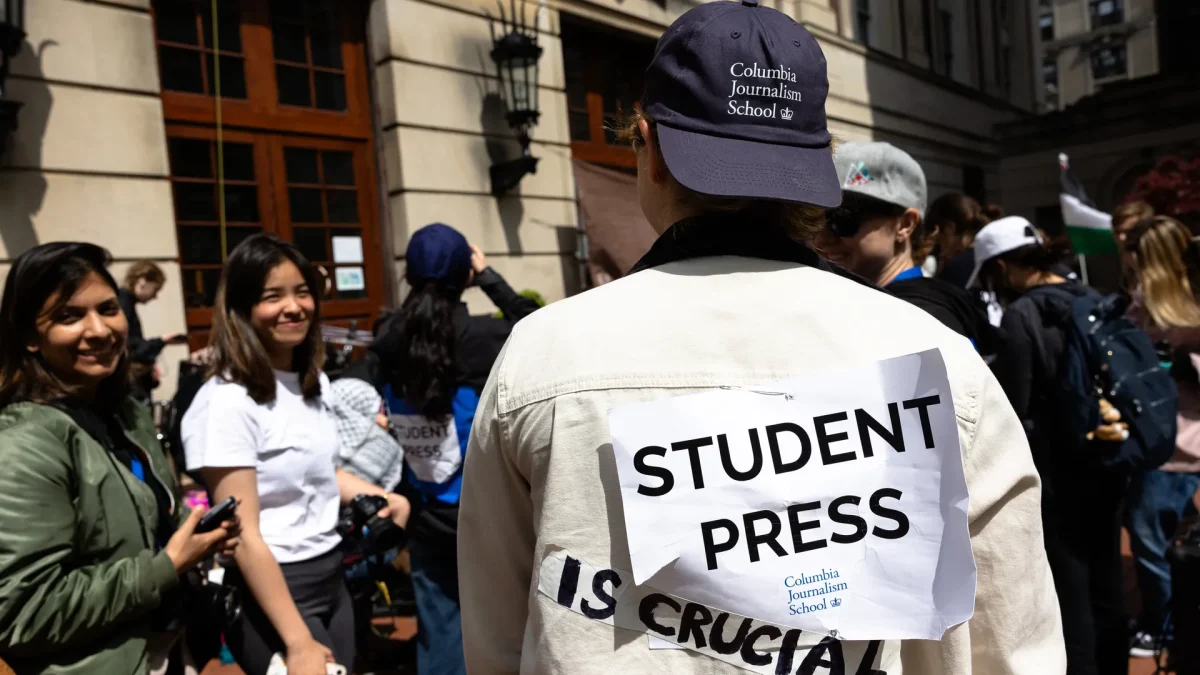


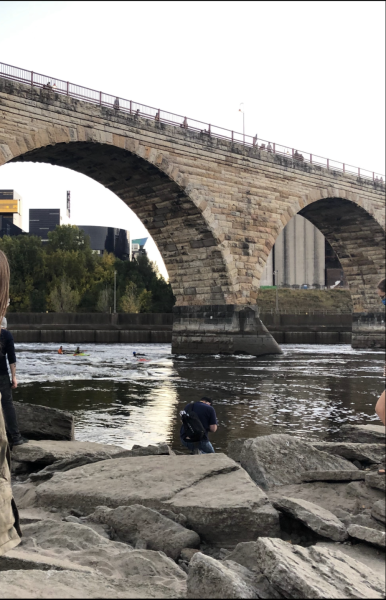
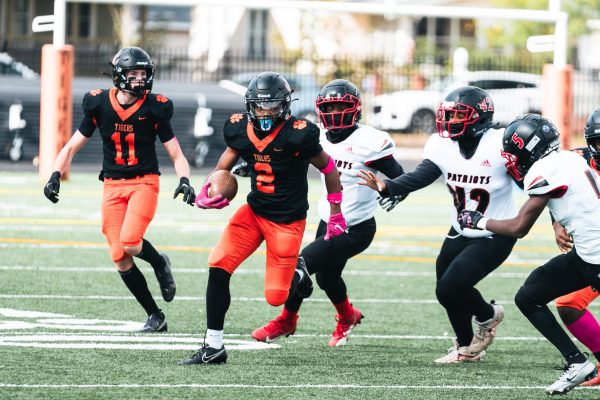
![A power outage on Friday May 12 before the start of the school day led many students to leave the building and miss parts of first, second and third hour. “[Staff at the front door] said the power might be on at 11, so [we should] come back to school at 11,” recalled freshman Riley Olson. “A lot of people went back home.” However, Principal Afolabi Runsewe claimed and maintains that students were told to stay in the commons and were never given the option to leave school.](https://www.shsoutherner.net/wp-content/uploads/2023/06/power-outage-475x356.png)
